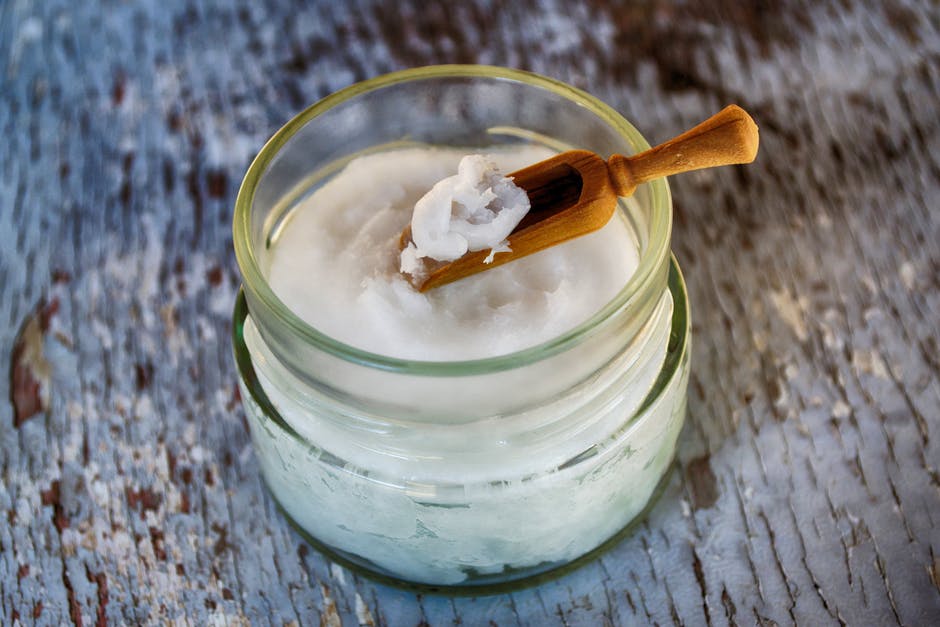It's that time of year! Beautiful weather, long summer days, and lots and lots of sunshine!! While the sun provides our bodies with necessary Vitamin D, and for many of us a happy mind, it also brings with it harmful UVA + UVB rays. With the number of sunscreens on the market today, varying SPF numbers, and organic claims, it can be tough to discern what's truly good for us, and what's protecting us from one form of cancer while exposing us to another—particularly, toxic chemicals that penetrate our skin.
According to The Environmental Working Group's 2018 Sunscreen report, almost 67% of sunscreens sold in the U.S. don't work. 67%!! Either because they failed to provide adequate protection from both UVB and UVA rays, or they contained toxic ingredients. Even worse, the report found that U.S. sunscreens allow almost three times the amount of UVA rays to transfer through our skin compared to those sold in Europe.
Why This Matters!
Not only are UVA rays more abundant than UVB rays, they are also more harmful to our health. While UVB rays are the ones that cause our skin to burn and damage our epidermis (the most superficial layer of our skin), UVA rays penetrate our skin deeply and can lead to premature skin aging, wrinkles, and skin cancer.
So to help you protect your health, I'm sharing some important do's and don'ts when it comes to purchasing sunscreens. At the end of the day, companies are going to market to us what they think we want, so it's up to us to be educated consumers and choose wisely.

SAFE SUNSCREEN DON'TS 👎🏽
- No Sprays! Though convenient, spray sunscreens pose high inhalation risks, both for you and everyone around you. So not only are you feeding toxic ingredients to your skin, but you end up inhaling a lot more than you put on. Yuck!
- High SPF Doesn't = Better! SPF stands for "sun protection factor" against UVB radiation (i.e., sunburns). Unfortunately, SPF doesn't protect us from the sun's UVA rays (i.e., aging-skin and cancer). So while it may seem like you can stay out in the sun longer since high-SPF sunscreens reduce sunburns, remember these products aren't protecting the deeper layers of your skin. Resist the temptation to reach for anything higher than SPF 50, and reapply your sunscreen often if you're going to be exposed for long periods of time. P.S. SPF values are capped at 50 in Europe, Australia, Canada, and Japan.
- Avoid Chemical Sunscreens! Sadly, the list of toxic chemicals in sunscreens is often much longer than those that are good for our health. Here are the major culprits to watch out for:
- Oxybenzone (Benzophenone-3): Endocrine disruptor that penetrates the skin causing hormone imbalance and allergic reactions in those with skin sensitivities. Recently banned in Hawaii due to its ability to kill coral reefs. Tip: Do you want Oxybenzone out of your sunscreen? Sign this petition!
- Avobenzone (Benzophenone): Often used to replace Oxybenzone. Penetration enhancer, meaning it helps whatever is in your sunscreen absorb into your skin and therefore your bloodstream, that breaks down when exposed to the sun—increasing free radicals in the skin and skin cancer risks.
- Methylisothiazolinone: Linked to allergies and listed as a pesticide by the EPA. Banned in the EU in leave-on cosmetic products though still allowed in the US. Also considered an ecotoxin and harmful to marine life.
- Vitamin A (Retinal Palmitate, Retinal Acetate, Retinal Linoleate, Retinol): Speeds up the development of skin tumors, especially when exposed to sunlight, so it definitely doesn't belong in the one product that claims to protect your skin from the sun!! According to the 2018 EWG Safe Sunscreen Guide, the sunscreen industry adds vitamin A to about 12 percent of beach and sport sunscreens, 15 percent of moisturizers with SPF, and 5 percent of all SPF-rated lip products.
- Octocrylene: A synthetic UV ray absorber that may cause allergic reactions in those with sensitive skin. Also shown to bio-accumulate in the body so best to steer clear!
- Octinoxate/Octylmethoxycinnamate: Commonly used as a UV filter. Easily absorbed through the skin (has been found in human urine, blood and breast milk) and a known endocrine disruptor. Also, an eco-toxin that is linked to coral bleaching.
- Say No to Nano Particles! Because they are so tiny, nano particles are easily absorbed into our bloodstream and can penetrate our cell walls. They are often used in sunscreens as they don't create a white layer on our skin, but have been shown to cause significant developmental disorders in sea life, even in small concentrations. Remember, when we wash products off of our bodies, they eventually end up in the ocean and can cause harm to the environment. Always look for non-nano mineral sunscreens as they are better for our skin (can't be absorbed) and the environment.
- Don't Leave Yourself Exposed! While wearing sunscreen is important, don't forget the importance and effectiveness of wearing UV filtering sunglasses, hats, and proper clothing, especially if you're going to be exposed to the sun during peak hours.
- Too Much of Anything is No Good! Don't make the mistake of thinking that because you've applied sunscreen that it makes it safe for your skin to be exposed to direct sunlight for hours upon hours. If you absolutely can't pull yourself away from lounging on the beach all summer, make sure to give your skin a break by taking a dip in the water and alternating between sunshine and shade.

SAFE SUNSCREEN DO'S 👍🏽
- Check the UV Index for the Day! Learn to plan around the sun on extra hot days and try to limit your skin exposure during peak sunlight hours.
- Stay Clothed! As tempting as it can be, it's important to keep your clothes on if you're going to be out in the sun for extended periods of time, especially during peak hours. Wear layers to help keep you cool, yet protected.
- Reapply! Reapply! Reapply! Get in the habit of reapplying your nontoxic sunscreen every few hours—and immediately after being exposed to water—to ensure adequate protection if you are going to be out all day.
- Opt for Shade. Learn to alternate between sunshine and shade to help give your skin a break. Remember: damage from UVA rays can't be seen on the surface level, so just because your skin's not burnt, doesn't mean it's not getting damaged!
- Water-Resistant is Your Friend! Always opt for a water-resistant nontoxic sunscreen to help protect you while you're in the water. Natural sunscreens with beeswax (or candelilla wax if you're vegan) will do the trick.
- Be Mindful of Our Oceans. Many common sunscreen ingredients are not only toxic to humans, but they are also harmful to our oceans, the reefs, and marine life. Look for the reef-friendly labels now present on many sunscreens and non-nano zinc oxide, which is the most reef-friendly sunscreen option available in the US.

DIY SUNSCREEN - SPF 20+
Recipe Updated: 7.12.21
Want to make your own safe sunscreen?! Here's our go-to recipe :) I recommend reapplying every 4 hours if prolonged duration in the sun, and/or after swimming. This recipe is safe for babies and children too. It's highly-moisturizing so feel free to use in place of your daily cream or lotion. We have been using this recipe in my family for years and have yet to burn. Tip: If you want something lighter for your face, simply remove the Shea butter.
- INFO
- Yields: 1 4oz jar
- Shelf-Life: 12 months
- Cook Time: 25-30 minutes
- INGREDIENTS
- 2 tbsp Unrefined Fair-Trade Shea Butter
- 2 tbsp Organic Olive Oil (even better if it's infused with organic calendula or chamomile flowers!)
- 2 tbsp Organic Coconut Oil
- 2 tbsp Beeswax (summer is the perfect time to pick some up from your local farmer's markets)
- 2 tbsp Non-nano Zinc Oxide
- 1 tsp Organic Jojoba Oil (optional - helps balance skin's natural oil production)
- 1 tsp Organic Pomegranate Seed Oil (optional-helps reduce sun spots)
- Organic Raw Cacao Powder (optional - for a tinted sunscreen)
- INSTRUCTIONS
- Fill a small saucepan 1/4 of the way with cold water.
- Add all ingredients except zinc oxide (and cacao powder if using) into a glass bowl, and place the bowl on top of the saucepan to create a double boiler.
- Turn gas onto lowest flame setting and mix frequently to help incorporate ingredients.
- Once melted, remove from stove and allow to cool for a few minutes.
- Slowly add in the zinc oxide stirring continuously until well mixed. IMPORTANT NOTE: Zinc oxide can be harmful to the lungs if the tiny particles are inhaled so always wear a mask to protect yourself!!
- Add cacao powder in increments of 1/2 tsp until desired tint is achieved and mix until well incorporated (I like to use a hand mixer for a nice smooth, whipped texture)
- Cover and store in a cool, dark place, or refrigerate.
- To Use: Melt the sunscreen between your palms and apply liberally over face + body, reapplying every 4 hours and after exposure to water. Do not rub in sunscreen well, as you would cream or lotion, as it's important for a layer to stay on the surface of your skin.
Tip: This sunscreen will liquify in the heat, but is still fine to use. Simply apply like an oil if it melts. I recommend keeping the sunscreen in your bag and out of direct sunlight to best preserve its healing properties, or to refrigerate when not using. Simply remove from the refrigerator an hour before use for easier application.
Recommended Safe Sunscreen Brands
Updated 7.12.21
Not up to making your own? Here are a few safe options! Notice how every ingredient is recognizable and there are less than 10 ingredients total.
- All Good
- Water-Resistant Sunscreen Butter
- Kid's Sunscreen Butter Stick
- Tip: As with most brands, just because some products are free of chemicals and synthetic preservatives, doesn't mean they all are! Notice the difference of ingredients in their other versions.
- Badger Balm
- Unscented Sunscreen with Zinc Oxide
- Baby Sunscreen Cream: If I it were me, I'd opt for the baby version no matter what your age! Both of these sunscreens offer the same level of protection, however, the baby formula contains chamomile and calendula, two of the most soothing and inflammation reducing flowers out there.
- Tip: Again, some of their other versions contain some questionable ingredients, so always (always!!) read the labels carefully.
- Raw Elements
- Baby + Kids 30: Perfect for adults too!
- Tinted Sunscreen: Great nontoxic tinted sunscreen option for medium olive tone-darker skin tones. Tip: If this sunscreen is too tinted for you, mix a small amount with your regular nontoxic sunscreen to create the right shade for your skin.
- P.S. I personally find the natural rosemary extract/scent to be too strong for my sensitive skin and nose, so if you have sensitive skin like me, I wouldn't recommend any of the sunscreens from this particular brand!
Love + Light + Sunshine,
~Smita :)
